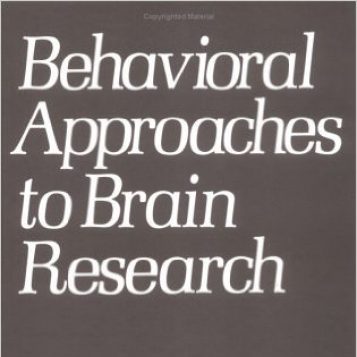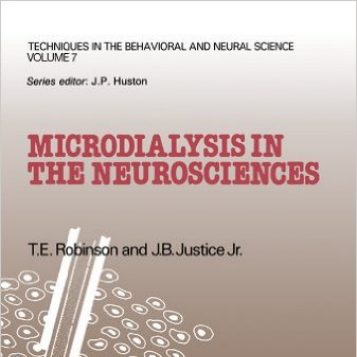Elliot S. Valenstein Distinguished University Professor of Psychology and Neuroscience
About
Additional Research Interests: Learning, Memory, Motivation, Neuroscience
Cues (conditional stimuli, CSs) that are associated with rewards can act as powerful temptations, leading to maladaptive behavior, such as overeating, or, in the case of drug cues, relapse. However, such cues come to exert powerful control over motivated behavior only if they are attributed with incentive motivational properties (‘incentive salience’). In a series of studies we have found that there is considerable individual variation in the extent to which reward cues acquire incentive motivational properties. Some rats, called sign-trackers (STs) are especially prone to attribute incentive salience to reward cues, relative to others (goal-trackers, GTs). Importantly, the propensity to attribute incentive salience to a food cue also predicts the the propensity to attribute motivational properties to drug cues. That is, STs also have particular difficulty resisting drug cues, in the sense that some classes of drug cues both maintain drug-taking behavior and reinstate drug-seeking behavior to a much greater extent in STs than in GTs. In addition, individual variation in these “bottom-up” motivational processes is associated with individual variation in “top-down” inhibitory control over behavior. Finally, most recently, we have begun to explore the influence of pharmacokinetic factors on the development of addiction-like behavior.
For more information see: http://sites.lsa.umich.edu/terryrobinson/ and https://scholar.google.com/citations?hl=en&user=dwHDUDsAAAAJ
Recent Representative Publications
Allain, F., Delignat-Lavaus, B., Beaudoin M-P., Jacquemet, V., Robinson, T.E., Trudeau, L-E., and Samaha, A-N. Amphetamine maintenance therapy during intermittent cocaine self-administration in rats attenuates psychomotor and dopamine sensitization and reduces addiction-like behavior. Neuropsychopharmacology, 2020 (in press).
bioRxiv preprint (2020.01.10.900852) posted online Jan. 10, 2020. doi: https://doi.org/10.1101/2020.01.10.900852.
Carr, C.C., Ferrario, C.R. and Robinson, T.E. Intermittent access cocaine self-administration produces psychomotor sensitization: effects of withdrawal, sex and cross-sensitization. Psychopharmacology, 2020, Mar 24. doi: 10.1007/s00213-020-05500-4. [Epub ahead of print] bioRxiv preprint first posted online Nov. 29, 2019; doi: http://dx.doi.org/10.1101/859520.
Kawa, A.B., Allain, F., Robinson, T.E. and Samaha, A-N. The transition to cocaine addiction: the importance of pharmacokinetics for preclinical models. Psychopharmacology, 2019, 236, 1145–1157
doi: 10.1007/s00213-019-5164-0.
Kawa, A.B. and Robinson, T.E. Sex differences in incentive-sensitization produced by intermittent access cocaine self-administration. Psychopharmacology, 2019, 236, 625-639.
Kawa, A.B., Valenta, A.C., Kennedy, R.T. and Robinson, T.E. Incentive and dopamine sensitization produced by intermittent but not long access cocaine self-administration. European Journal of Neuroscience, 2019, 50, 2663–2682. bioRxiv preprintposted online December 19, 2018; doi: https://doi.org/10.1101/499475
Robinson, T.E., Carr, C. and Kawa, A.B. The propensity to attribute incentive salience to drug cues and poor cognitive control combine to render sign-trackers susceptible to addiction. In Sign-Tracking and Drug Addiction, A. Tomie and J.D. Morrow (Eds.), Maize Books, Ann Arbor, 2018. Open Access at DOI: http://dx.doi.org/10.3998/mpub.10215070
Pitchers, K.K., Sarter, M. and Robinson, T.E. The hot ‘n’ cold of cue-induced drug relapse.
Learning & Memory, 2018, 25(9), 474-480
Cogan, E.S., Shapses, M.A., Robinson, T.E. and Tronson, N.C. Disrupting reconsolidation in rats: memory erasure or blunting of emotional/motivational value? Neuropsychopharmacology, 2019, 44, 399-407.
Ahrens, A.M., Ferguson, L., Robinson, T.E. and Aldridge, J.W. Dynamic encoding of incentive salience in the ventral pallidum: dependence on the form of the reward cue. eNeuro, 2018 May 8; 5(2).
pii: ENEURO.0328-17.2018. doi: 10.1523/ENEURO.0328-17.2018
Singer, B.F., Fadanelli, M., Kawa, A.B. and Robinson, T.E. Is a “cocaine habit” necessary for the development of addiction-like behavior in rats? Journal of Neuroscience, 2018, 38(1), 60-73.
Pitchers, K.K., Kane, L., Kim, Y., Robinson, T.E. and Sarter, M. “Hot” versus “cold” behavioral-cognitive styles: motivational-dopaminergic versus cognitive-cholinergic processing of a Pavlovian cocaine cue in sign- and goal-tracking rats. European Journal of Neuroscience, 2017, 46(11), 2768-2781.
Flagel, S.B. and Robinson, T.E. Neurobiological basis of individual variation in stimulus-reward learning. Current Opinion in Behavioral Sciences, 2017, 13, 178-185.
Singer, B.F., Guptaroy, B., Austin, C.J., Wohl,, I. Vaughan, R.A., Gnegy, M.E., Robinson, T.E. and
Aragona, B.J. Individual variation in incentive salience attribution and accumbens dopamine transporter expression and function. European Journal of Neuroscience, 2016, 43(5), 662-670.
Kawa, A.B., Bentzley, B.S. and Robinson, T.E. Less is more: prolonged intermittent access cocaine self-administration produces incentive-sensitization and addiction-like behavior. Psychopharmacology, 2016, 233, 3587-3602.
Ahrens, A.M., Meyer, P.J., Ferguson, L., Robinson, T.E. and Aldridge, J.W. Neural activity in the ventral pallidum encodes variation in the incentive value of a reward cue. Journal of Neuroscience, 2016, 36(30), 7957-7970.
Singer, B.F., Bryan, M.A., Popov, P., Scarff,, R. Wright, E., Aragona, B.J. and Robinson, T.E. The sensory features of a food cue influence its ability to act as an incentive stimulus and evoke dopamine release in the nucleus accumbens core. Learning & Memory, 2016, 23(11), 595-606.
Berridge, K.C. and Robinson, T.E. Liking, wanting and the incentive-sensitization theory of addiction. American Psychologist, 2016, 71(8), 670-679.
Flagel, S.B., Clark, J.J., Robinson, T.E., Mayo, l., Czuj, A., Willuhn, I., Akers, C.A., Clinton, S.M., Phillips, P.E.M. and Akil, H. A selective role for dopamine in stimulus-reward learning. Nature, 2011, 469, 53-59.
For more information on publications see: https://scholar.google.com/citations?user=dwHDUDsAAAAJ&hl=en&oi=ao



